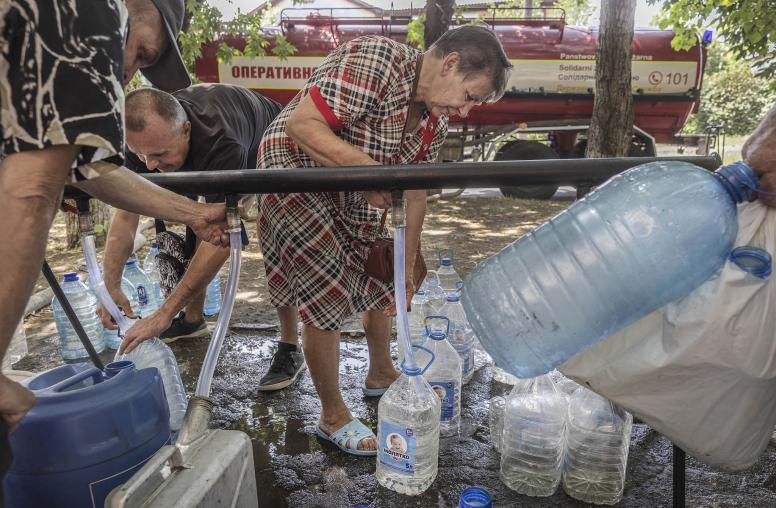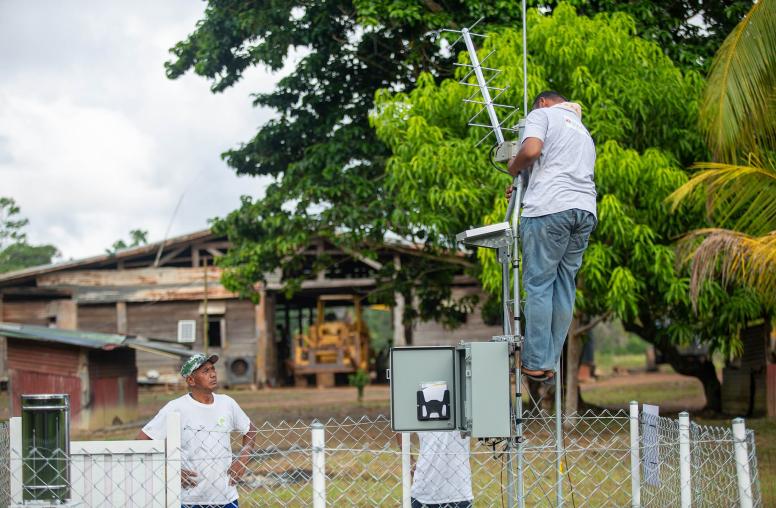Mixing Business with Peace
The link between creating strong local economies and preventing conflict has long been established. But with so much volatility around the world, many experts believe now is the time to make something happen.
April 13, 2011
When the private sector moves into markets in conflict zones, two things can happen: companies can find money-making opportunities, and those zones of instability can find long-term economic solutions to their problems.
The link between creating strong local economies and preventing conflict has long been established. But with so much volatility around the world, many experts believe now is the time to make something happen.
The United States Institute of Peace co-hosted a special online discussion on the nexus between business and peace, bringing together more than 1,500 participants in 93 countries.
The “Business and Peace” event was co-hosted by USIP’s Center for Sustainable Economies and George Washington University’s Institute for Corporate Responsibility March 14-25. It was part of a broader initiative that seeks to develop strategies to align commercial interests in conflict–affected states and regions with mechanisms to avoid violent conflict.
“It makes sense to move beyond alluding to what the potential may or may not be to actually start crafting both strategies and mechanisms that will allow the business sector to play a positive role in rebuilding these states,” says Raymond Gilpin, associate vice president, Sustainable Economies Center of Innovation.
The event brought together former military officers, international development experts and leaders from the industry and investment communities. Through online discussions and other methods, the event aimed to find effective strategies for luring private sector investment into these conflict zones.
The private sector should not be mandated by government to invest in unstable areas – it has to make good business sense, says Gilpin. “Business people should make business decisions that make sense for themselves and their shareholders,” he says. “But those goals can be aligned with predictability and stability in their environments.”
The conclusions from the online workshop, known as an “e-seminar,” included the main takeaway that, contrary to what some believe, business is not the problem in conflict zones – it can actually be the solution. Participants also think generally that private development can bridge the gap between foreign aid, which creates dependencies, and creating sustainable economies. But experts in the seminar believe that a more detailed analysis is needed on how business investment creates stability in conflict zones as a way to help explain the need for the private sector to get involved. Ultimately, the broad goals of profitability and peace building can be aligned in many ways, participants in the discussion decided.
Harnessing the power of the Internet to bring so many individuals together for the event was a cost effective solution, Gilpin says.
For so many reasons, so-called expeditionary economics – apparently coined by the president and CEO of the Kauffman Foundation – make sense to many experts. But actually doing it can be another thing. In the rush to create stability in some conflict zones, for example, the U.S. has spent billions of dollars in aid – with little result. Take Afghanistan. Since 2008, the U.S. has paid out nearly $18 billion in aid and reconstruction money, but the country still lacks a coherent, long-term strategy that could create a sustainable economy.
With its resources, size and expertise, Schramm believes the U.S. military can play a unique role in all of this. And it has a keen interest in doing so – the more it can help foster sustainable economies around the world, the fewer crises to which it must deploy its forces, and complements a host of other U.S. programs that aim to do the same. “It is imperative that the U.S. military develop its competence in economics,” he wrote in the May/June 2010 issue of Foreign Affairs. “It must establish a new field of inquiry that treats economic reconstruction as part of any successful three-legged strategy of invasion, stabilization or pacification, and economic reconstruction,” he wrote. Schramm argues that foreign aid – even micro aid dispersed in conflict zones by military commander – creates costly dependence.
“These development efforts are motivated by the very best intentions. Still, a new and more effective doctrine for spurring economic growth is needed,” Schramm wrote. Gilpin agrees: “we need to wean them off aid and foreign assistance,” he says. “The only way to do this is if their private sectors become vibrant, are supported by effective regulatory frameworks and are able to sustain equitable economic growth.”



